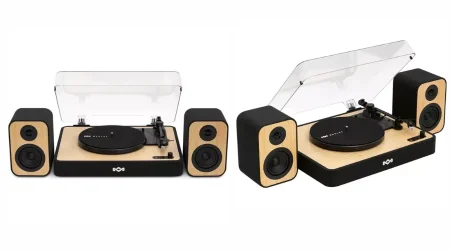
Are you looking for the perfect electronics to equip your home? It can be overwhelming to choose from the wide range of options available in today’s market. But don’t worry – with a bit of research, patience, and a comprehensive guide, you can find the perfect electronics for your home. This guide will help you determine which electronics are best for your needs and budget, and will provide tips and advice on how to compare different models, features, and brands. From televisions and sound systems to computers and gaming consoles, we’ll walk you through the process of choosing the right electronics for your home. So, whether you’re looking to upgrade your home theater or just want to spruce up your living room, this guide has you covered. Let’s get started!
The Basics of Choosing Electronics
Before you start shopping for electronics, you should have a good idea of what you’re looking for. This process can be broken down into four steps: Identifying your needs, understanding your budget, comparing features, and evaluating brands. Once you’ve taken these steps, you’ll be ready to shop for the perfect electronics.
Identifying Your Needs
Before you head to the store, you’ll want to take some time to think about your needs. Will you mostly be using the new electronics for work, or will they be for leisure? Do you have any specific features you’d like? What type of space will the electronics be going in? If you’re replacing an old piece of equipment, what did you like about it? When answering these questions, consider the following: – Will you be using the new electronics for work or leisure? If you’re buying electronics for work, you might want to prioritize different features and functionality than if you’re buying them for leisure. – What specific features do you want? For example, if you’re in the market for a new computer, you should make sure it has the features you want. This includes things like RAM, processing speed, and other specifications. – What type of space you’ll be putting the electronics in. If you’re buying a television, for example, you’ll want to make sure you get one with the right screen size.
Types of Electronics
In order to really narrow down your options and decide which electronics are right for you, you’ll want to first determine what types of electronics you’re looking for. There are many types of electronics, and they are broken down into three categories: computers, audio/video, and home appliances. You’ll want to decide which category or categories of electronics you’re looking for.
Computers
First, let’s talk computers. Computers may be the most versatile piece of equipment you have, and there are a lot of different things you can do with them. When choosing a computer for home use, you’ll want to make sure it is a desktop (as opposed to a laptop). Desktops are better for gaming, have more storage options, and are more powerful. You can also purchase a monitor and a keyboard/mouse separately, if you prefer. There are two main types of computers you can buy for home use: – Desktop computers are the traditional computers, and offer more power and storage options. – Laptops are portable computers that are great for everyday use on the go. Additionally, you’ll want to consider the following features when choosing a computer: processing speed, RAM, storage capacity, operating system, and screen size.
Audio/Video
Audio/video electronics are used to play and record audio and video content. These types of electronics are used in almost every room in the house, such as TVs, sound bars, and home theaters. When choosing these types of electronics, you’ll want to consider the following: screen size and type, sound quality, remote functionality, WiFi functionality, and number of inputs.
Home Appliances
Home appliances are mainly used for cleaning and cooking. These include things like dishwashers, vacuums, refrigerators, and ovens. When choosing home appliances, you’ll want to consider the following: number of people the item will serve, longevity and quality, cleaning and maintenance requirements, and special features.
Features to Consider
When shopping for electronics, there are a number of features you’ll want to consider. This will help you narrow down your options and find the perfect product for you. There are five main types of features you’ll want to look for: screen size and type, sound quality, remote functionality, WiFi functionality, and number of inputs.
Screen size and type
The first feature to consider is the screen size and type. When choosing a TV, you’ll want to make sure it has the right screen size for your viewing environment. For example, if you’re buying a TV for your living room, you’ll probably want a bigger screen than if you’re buying a TV for a bedroom. You’ll also want to consider the type of TV and screen type (see below). There are two main types of TVs: – LED/LCD TVs are the most common type of TVs on the market, and are best for watching in a variety of light settings. – OLED TVs are the best TVs you can buy, and are great for watching TV in any light setting.
Sound quality
The next feature to consider is sound quality. You’ll want to make sure the new audio equipment you’re buying has the right sound quality for your needs. This can vary depending on what you’ll be using the sound equipment for. For example, if you’re buying a sound bar for your living room, you’ll want the sound quality to be balanced between treble, mid-tones, and bass. If you’re buying a speaker system for your living room, on the other hand, you’ll want the sound quality to be focused on the mid-tones. If you’re buying a sound system for your bedroom, you’ll want a sound quality that is more focused on treble and bass.
Remote functionality
You’ll also want to consider the remote functionality of the electronics you’re buying. Are the buttons easy to use? Is the remote easy to navigate? Are there a lot of buttons you don’t use? These are all things you’ll want to think about. Additionally, you’ll want to make sure the new electronics you’re buying have WiFi capabilities. This way, you can connect them to your home WiFi network.
WiFi functionality
The next feature to consider is WiFi functionality. You’ll want to make sure the new electronics have WiFi capabilities, so you can connect them to your home WiFi network. This will allow you to easily stream content from your devices to the new electronics.
Number of inputs
Finally, you should consider the number of inputs the electronics you’re buying have. This will help you determine how many different devices you can plug in at once. For example, if you’re buying a new sound bar for your living room, you’ll probably want a sound bar with multiple inputs, so you can plug in your gaming console, cable, and Apple TV.
Comparing Different Models
Once you’ve determined what features you’re looking for in a new piece of electronics, you should compare different models to decide which one is best for you. There are two ways to go about this: comparing different brands, and comparing different models from the same brand.
Comparing different brands
The first way to compare different models is to compare different brands. This will allow you to quickly narrow down your options and determine which brands offer the features you’re looking for. You can do this by creating a list of the brands you’d like to consider, and then checking out their websites to learn more about their products. One great way to do this is to use an online website like TopTenREVIEWS.com to browse different brands and models. This will allow you to quickly compare different models and see which ones best suit your needs.
Comparing different models from the same brand
Another way to compare different models is to compare different models from the same brand. This can be helpful, especially if you’re having a hard time deciding between two different brands. In order to do this, you’ll want to visit the website of the brand you’re considering and look through their product list. Once you’ve found a model you’re interested in, you can compare it to other models from the same brand to see if there are any differences. This will allow you to make an informed decision about which model is best for you.
Brands to Consider
Now that you know how to compare different models, you’ll want to determine which brands to consider. There are a lot of different electronics brands out there, and it can be difficult to determine








